@1northcoin said:
Not seeing one from the first year of circulation - 1850- here is mine:
For those interested in the provenance of this particular specimen, here is a summary:
This is the coin identified as possibly unique on the [original] Coinfacts site as the first $20 proof/presentation piece, excepting the 1849 specimen in the Smithsonian. ....."
As noted on the holder, it once belonged to C.W. Green. Interestingly in reading Breen's book cataloging gold proofs I came across a reference by Breen to the very coin. He noted that there were possibly several Presentation Pieces a/k/a proofs made of the first $20 gold piece available for circulation in 1850. He went on to note that Green was reported to have one, but that he had never seen it himself. In addition, the coin is featured on CoinFacts.com as its first described "Significant example" of the 1850 Double Eagle, and CoinFacts further notes under Mintage, "Proofs: Unique?"
Here is the above referenced "Coin Facts" description of the coin and its more recent auction history:
"Significant examples:
SEGS Proof-62, "Presentation/PL, enhanced surfaces". Ex - Superior Galleries' "Pre-Long Beach Sale" May 27-29, 2001, Lot 4170A, where it was described as follows: "1850 SEGS graded Proof 62 marked "Presentation/PL" and " Enhanced Surfaces". The coin is also pedigreed to Dr. C. W. Green and so noted on the holder. This is the first collectible issue of the United States Double Eagle series. This coin has a beautiful bold strike with full stars and all other details sharp and clear. The fields are Prooflike and you can see clearly with magnification that the dies and planchet were enhanced prior to striking...""
Adding to the above:
Through the efforts of poster yosclimber on this forum, an auction description written by Max Mehl for the coin was located from a 1949 auction. It was lot 719 in the 1949 auction.
This is from Max Mehl's auction description:
"719 1850
The most beautiful specimen of this date $20.00 Gold Piece I have ever seen or that I can find record of. This coin was purchased by Dr. Green as a proof...
"The obverse is brilliant and equal to a brilliant proof. The reverse has some proof surface, but not as brilliant as the obverse. I classify it as brilliant semi-proof almost equal to a brilliant proof. It is far superior to any specimen of this date Double-Eagle that has been offered. In fact, none of the collections of Double-Eagles which have appeared in the market in the history of American numismatics have a specimen to compare to it ..."
Numismatic author and researcher Karl Moulton has further determined that this coin with the Green provenance was one and the same as that sold in an even earlier auction in 1870 as one of the coins from Longacre's Estate where it was sold as Lot 178. Of added significance another poster on this board, Rick Snow, chanced to have an original of that 1870 auction catalogue with the added information from penned in notes that the purchaser of the coin was Edward Cogan.
Each of the above described auction descriptions from 1870, 1949, and 2001 are consistent with the subject coin's unique appearance.
The existence of a located in Paris 1850 Double Eagle "Proof" specimen, which was apparently unknown to Breen, first came to my attention after coming across a reference to it in the 2016 book "1849 - The Philadelphia Mint's Gold" by Michael Moran and Jeff Garrett. Apparently it is the only other known "proof" or "proof like" 1850 Double-Eagle known to exist today.
FWIW, it appears that the above referenced Paris Specimen may have been sourced from a special set that was minted in the fall of 1850 while the 1850 Double Eagle in my collection was struck from the first dies earlier in 1850. Numismatic author and researcher Karl Moulton noted as to the 1870 Longacre Estate auction description of the subject coin:
"It [my coin] came from the James B. Longacre estate (the coin's designer), and was sold as a proof. This piece was from the first dies used for the double eagle and might be termed a trial piece."
Roger Burdette located in his U.S. Mint research a copy of a September, 1850 letter describing the special set while newspaper accounts from as early as March, 1850 reference the 1850 Double Eagles having been released into circulation by that time.
Here is the letter Roger located referencing the later in the year minting of a "set of Gold Master Coins."
Mint of the United States
Philadelphia
September 26, 1850
Hon. Thomas Corwin,
Secretary of the Treasury
Sir,
I have the honor to acknowledge the receipt of your letter of yesterday,
respecting an application made by the Committee on the Library for a series of
“Specimens of gold coins.” I presume that these specimens include one set of
Gold Master Coins, and I have the satisfaction to say that these can be furnished
without delay.
The number of coins will be five, and their cost $38.50
Very respectfully,
Your faithful servant,
R.M. Patterson, Director
Apologies if this is getting off on a tangent, but for those interested in the subject of “proofs” having been minted for the first year of circulation of the Double Eagle, John W. Dannreuther in his recently published “United States Proof Coins - Volume IV Part Two” provides at page 864 a photo of the Paris Specimen.
Given the coin’s cleaning (he assigns it a PR 61 while as pictured in my original post mine is identified by Larry Briggs as a PR 62) he notes, “Numerous numismatic experts would doubt this example’s Proof status ...”.
I can add that in my own communications with the curator at the museum where it is housed the Bibliotheque nationals de France maintains that their 1850 Double Eagle is indeed a proof.
Even at melt, you are showing $25,000. Probably many multiples of that in numismatic value. I bet the pharmaceutical companies have a medication they will sell you for this illness.
Even at melt, you are showing $25,000. Probably many multiples of that in numismatic value.** I bet the pharmaceutical companies have a medication they will sell you for this illness.**
Nice to see so many Carson City 20s represented. if my count is right the earliest is an 1877cc followed by an 1884cc, at least two each of 1890cc, and 1893cc - although apparently none in mint state which is not surprising considering the apparently lower mintage in Carson City compared to San Francisco as well as the fact that most of the shipwreck preserved 20s were from the City by the Bay.
@1northcoin said:
Apologies if this is getting off on a tangent, but for those interested in the subject of “proofs” having been minted for the first year of circulation of the Double Eagle, John W. Dannreuther in his recently published “United States Proof Coins - Volume IV Part Two” provides at page 864 a photo of the Paris Specimen.
Given the coin’s cleaning (he assigns it a PR 61 while as pictured in my original post mine is identified by Larry Briggs as a PR 62) he notes, “Numerous numismatic experts would doubt this example’s Proof status ...”.
I can add that in my own communications with the curator at the museum where it is housed the Bibliotheque nationals de France maintains that their 1850 Double Eagle is indeed a proof.
Interesting, Julian opines in this link that a MS-64 Proof Like 1850 would today be a quarter million dollar coin.
Here is another $20 Double Eagle that has yet to be represented. Pictured is my 1861-S Reverse Paquet. With its unique reverse a case can be made for it actually being a separate type Double Eagle in addition to the Types 1, 2, 3.
Q. David Bowers in his "The Official Red Book" series, "A Guide Book of United States Type Coins" writes at page 268, "For a short time in early 1861, a distinctive variety , possibly even designated as a type , was used, the Paquet Reverse, in which the letters were taller than on the earlier style." He goes on to add that only two were struck at the Philadelphia Mint and a limited number less than 20,000 escaped into circulation from the San Francisco Mint before production was stopped. Today no mint state examples of the 1861-S Paquet are known to exist and survivors in any condition are a rarity.
In Q. David Bowers' separate book on Double Eagles he actually assigns the Paquet Reverse coins as a sub type of Type I with the designation of Type 1A.
From a prior posting:
Of course with regard to the 1861Paquet Reverse Double Eagles though, it is to be noted that an actual type has been assigned to them. In the Official Red Book series, the Q.David Bowers authored "A Guide Book of Double Eagle Gold Coins" the 1861 Paquet Reverse Double Eagles have been designated as "Type 1A: Modified Reverse."
As an added point of interest, in addition to the above discussed variety distinction between the Philadelphia minted Type 1A and the San Francisco minted Type 1A, there is also a subtle variety esoteric difference between the coins minted in San Francisco. At the San Francisco mint two separate dies were used to strike the reverses of the Paquets. The two dies have a slightly separate placement of the "s" mintmark.
The result is that multiple known varieties exist within the type, although all are of a single identified type - Type 1A.
BloodMan - Thanks for the kind words; the grades for the $20 Libs are as follows:
52-O PC55 CAC; 61-O PC53 CAC; 79-O PC45 ex: Fairmont (I do not know if Stacks Bowers submitted it to CAC prior to their auction. I bought it in the "secondary" market, not at the auction price ).
One of my favorites is a PC58 CAC 1876 $20 CC as it is terrific as seen "in hand". The image doesn't show off the luster and pop.
I’m pleased to share this attractive Semi-Prooflike 1897-S $20 Gold Liberty acquired May 31, 2025 at the TNA Coin Show in Conroe, Texas (North side of Houston).
IMO the surface Reflectivity seems very close to qualifying for the Prooflike designation.
I’ve been inactive regarding collecting for a while, and have decided to consolidate a portion of my collection to acquire some higher quality coins.
Was able to make an advantageous trade for this coin.
Stuart
Collect 18th & 19th Century US Type Coins, Silver Dollars, $20 Gold Double Eagles and World Crowns & Talers with High Eye Appeal
"Luck is what happens when Preparation meets Opportunity"
I have an 1857-S salvaged from the SS Central America, but this 1861 double eagle is my favorite Type I. this is graded AU-58.
Given that there have not been any shipwreck recoveries of the Type II double eagles, high grade pieces are very scarce. This 1873 is my type coin. It's graded MS-63.
I like this 1896, Type III, double eagle the best although it's not my highet grade example of the type. The reason is the 1896 presidential election where the debate over the ratio between gold and silver took center stage. This is graded a conservative MS-63.
This 1907 High Relief is one of the best examples I have seen. Yes, it's in "the wrong holder," NGC MS-65.
This 1908 No Motto was my first double eagle. I bought it when I was a sophomore in high school.
This 1927 double eagle is an MS-65 CAC. I was buried into it financially until the gold price went crazy.
Retired dealer and avid collector of U.S. type coins, 19th century presidential campaign medalets and selected medals. In recent years I have been working on a set of British coins - at least one coin from each king or queen who issued pieces that are collectible. I am also collecting at least one coin for each Roman emperor from Julius Caesar to ... ?
Years ago I made a discovery that there were actually two With Motto Reverse Hubs made in 1866, the first one with the N of IN low, and the second one raised in what is basically the normal position for the type. A few of the "Low N" dies were used, and at least one die was dual-hubbed from both hubs. Absolutely nobody ever cared.
THis is an 1866 Philadelphia coin.
Numismatist. 54 year member ANA. Former ANA Senior Authenticator. Winner of four ANA Heath Literary Awards; three Wayte and Olga Raymond Literary Awards; Numismatist of the Year Award 2009, and Lifetime Achievement Award 2020. Author "The Enigmatic Lincoln Cents of 1922," due out late 2025.
Comments
FWIW, it appears that the above referenced Paris Specimen may have been sourced from a special set that was minted in the fall of 1850 while the 1850 Double Eagle in my collection was struck from the first dies earlier in 1850. Numismatic author and researcher Karl Moulton noted as to the 1870 Longacre Estate auction description of the subject coin:
"It [my coin] came from the James B. Longacre estate (the coin's designer), and was sold as a proof. This piece was from the first dies used for the double eagle and might be termed a trial piece."
Roger Burdette located in his U.S. Mint research a copy of a September, 1850 letter describing the special set while newspaper accounts from as early as March, 1850 reference the 1850 Double Eagles having been released into circulation by that time.
Here is the letter Roger located referencing the later in the year minting of a "set of Gold Master Coins."
Mint of the United States
Philadelphia
September 26, 1850
Hon. Thomas Corwin,
Secretary of the Treasury
Sir,
I have the honor to acknowledge the receipt of your letter of yesterday,
respecting an application made by the Committee on the Library for a series of
“Specimens of gold coins.” I presume that these specimens include one set of
Gold Master Coins, and I have the satisfaction to say that these can be furnished
without delay.
The number of coins will be five, and their cost $38.50
Very respectfully,
Your faithful servant,
R.M. Patterson, Director
Apologies if this is getting off on a tangent, but for those interested in the subject of “proofs” having been minted for the first year of circulation of the Double Eagle, John W. Dannreuther in his recently published “United States Proof Coins - Volume IV Part Two” provides at page 864 a photo of the Paris Specimen.
Given the coin’s cleaning (he assigns it a PR 61 while as pictured in my original post mine is identified by Larry Briggs as a PR 62) he notes, “Numerous numismatic experts would doubt this example’s Proof status ...”.
I can add that in my own communications with the curator at the museum where it is housed the Bibliotheque nationals de France maintains that their 1850 Double Eagle is indeed a proof.
Even at melt, you are showing $25,000. Probably many multiples of that in numismatic value. I bet the pharmaceutical companies have a medication they will sell you for this illness.
Indian Head $10 Gold Date Set Album
Manufactured by "Gold Bond?"
Nice to see so many Carson City 20s represented. if my count is right the earliest is an 1877cc followed by an 1884cc, at least two each of 1890cc, and 1893cc - although apparently none in mint state which is not surprising considering the apparently lower mintage in Carson City compared to San Francisco as well as the fact that most of the shipwreck preserved 20s were from the City by the Bay.
Looks like skier07 now gets the prize for earliest Carson City 20 posted.
Interesting, Julian opines in this link that a MS-64 Proof Like 1850 would today be a quarter million dollar coin.
https://youtube.com/watch?v=mk0F_sQY-kM
Here is another $20 Double Eagle that has yet to be represented. Pictured is my 1861-S Reverse Paquet. With its unique reverse a case can be made for it actually being a separate type Double Eagle in addition to the Types 1, 2, 3.
Q. David Bowers in his "The Official Red Book" series, "A Guide Book of United States Type Coins" writes at page 268, "For a short time in early 1861, a distinctive variety , possibly even designated as a type , was used, the Paquet Reverse, in which the letters were taller than on the earlier style." He goes on to add that only two were struck at the Philadelphia Mint and a limited number less than 20,000 escaped into circulation from the San Francisco Mint before production was stopped. Today no mint state examples of the 1861-S Paquet are known to exist and survivors in any condition are a rarity.
In Q. David Bowers' separate book on Double Eagles he actually assigns the Paquet Reverse coins as a sub type of Type I with the designation of Type 1A.
From a prior posting:
Of course with regard to the 1861Paquet Reverse Double Eagles though, it is to be noted that an actual type has been assigned to them. In the Official Red Book series, the Q.David Bowers authored "A Guide Book of Double Eagle Gold Coins" the 1861 Paquet Reverse Double Eagles have been designated as "Type 1A: Modified Reverse."
As an added point of interest, in addition to the above discussed variety distinction between the Philadelphia minted Type 1A and the San Francisco minted Type 1A, there is also a subtle variety esoteric difference between the coins minted in San Francisco. At the San Francisco mint two separate dies were used to strike the reverses of the Paquets. The two dies have a slightly separate placement of the "s" mintmark.
The result is that multiple known varieties exist within the type, although all are of a single identified type - Type 1A.
@Labelman87 - I like your better/rare date double eagles, especially the 1861-O. What are the grades?
BloodMan - Thanks for the kind words; the grades for the $20 Libs are as follows:
52-O PC55 CAC; 61-O PC53 CAC; 79-O PC45 ex: Fairmont (I do not know if Stacks Bowers submitted it to CAC prior to their auction. I bought it in the "secondary" market, not at the auction price ).
).
One of my favorites is a PC58 CAC 1876 $20 CC as it is terrific as seen "in hand". The image doesn't show off the luster and pop.
I’m pleased to share this attractive Semi-Prooflike 1897-S $20 Gold Liberty acquired May 31, 2025 at the TNA Coin Show in Conroe, Texas (North side of Houston).
IMO the surface Reflectivity seems very close to qualifying for the Prooflike designation.
I’ve been inactive regarding collecting for a while, and have decided to consolidate a portion of my collection to acquire some higher quality coins.
Was able to make an advantageous trade for this coin.
Stuart
Collect 18th & 19th Century US Type Coins, Silver Dollars, $20 Gold Double Eagles and World Crowns & Talers with High Eye Appeal
"Luck is what happens when Preparation meets Opportunity"
@Stuart: thanks for reviving your old thread. Hers a couple type 1’s:
“The thrill of the hunt never gets old”
PCGS Registry: Screaming Eagles
Copperindian
Retired sets: Soaring Eagles
Copperindian
Nickelodeon
My only type 2:
The obv slab isn’t in a permitted format, but it’s a PCGS AU55 CAC
“The thrill of the hunt never gets old”
PCGS Registry: Screaming Eagles
Copperindian
Retired sets: Soaring Eagles
Copperindian
Nickelodeon
Finally, my type 3’s:
“The thrill of the hunt never gets old”
PCGS Registry: Screaming Eagles
Copperindian
Retired sets: Soaring Eagles
Copperindian
Nickelodeon
Two Branch Mint Carson sisters:
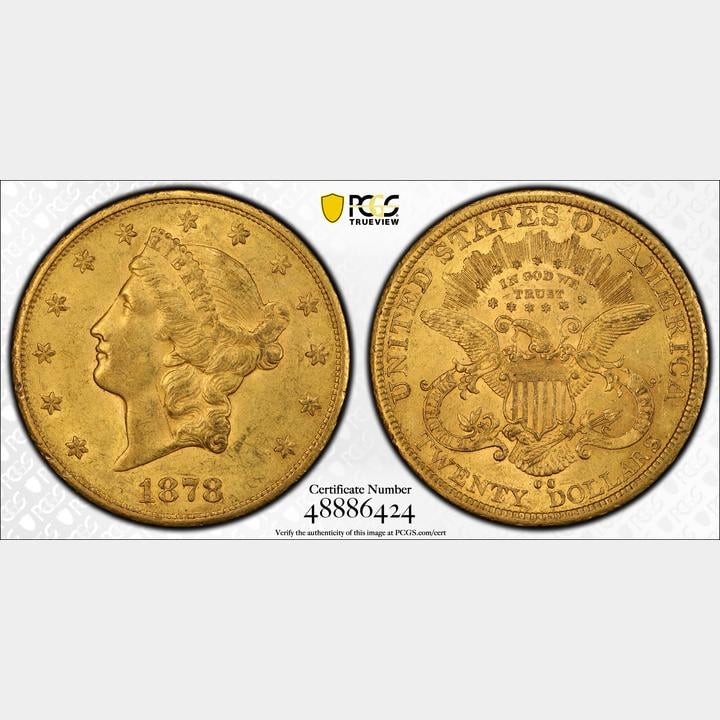
>
AU55cac
>
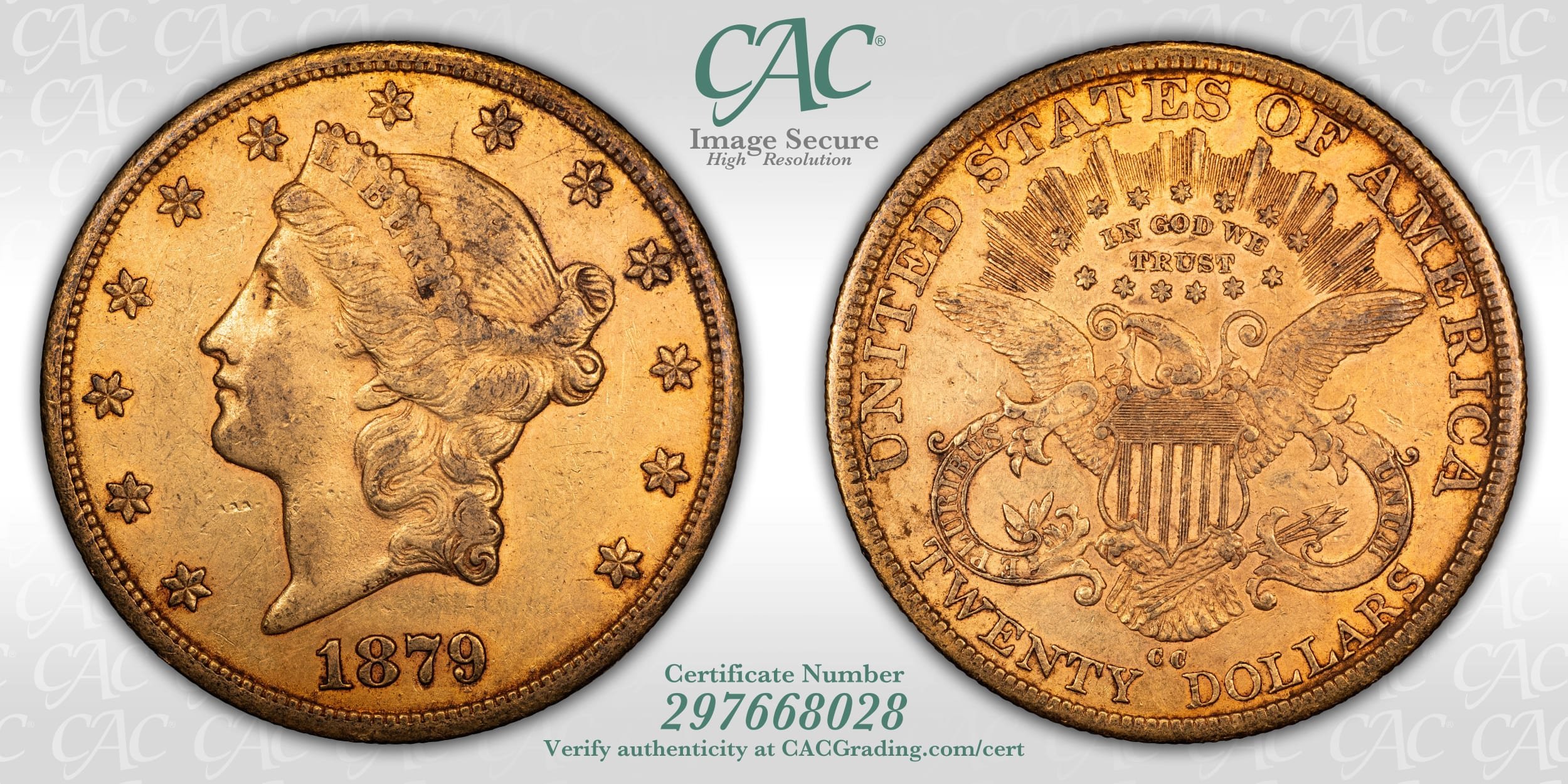
AU50
Mr_Spud
@Mr_Spud - Thanks for sharing those Gorgeous AU-58 Double Eagles!! 😎
Stuart
Collect 18th & 19th Century US Type Coins, Silver Dollars, $20 Gold Double Eagles and World Crowns & Talers with High Eye Appeal
"Luck is what happens when Preparation meets Opportunity"
All CAC
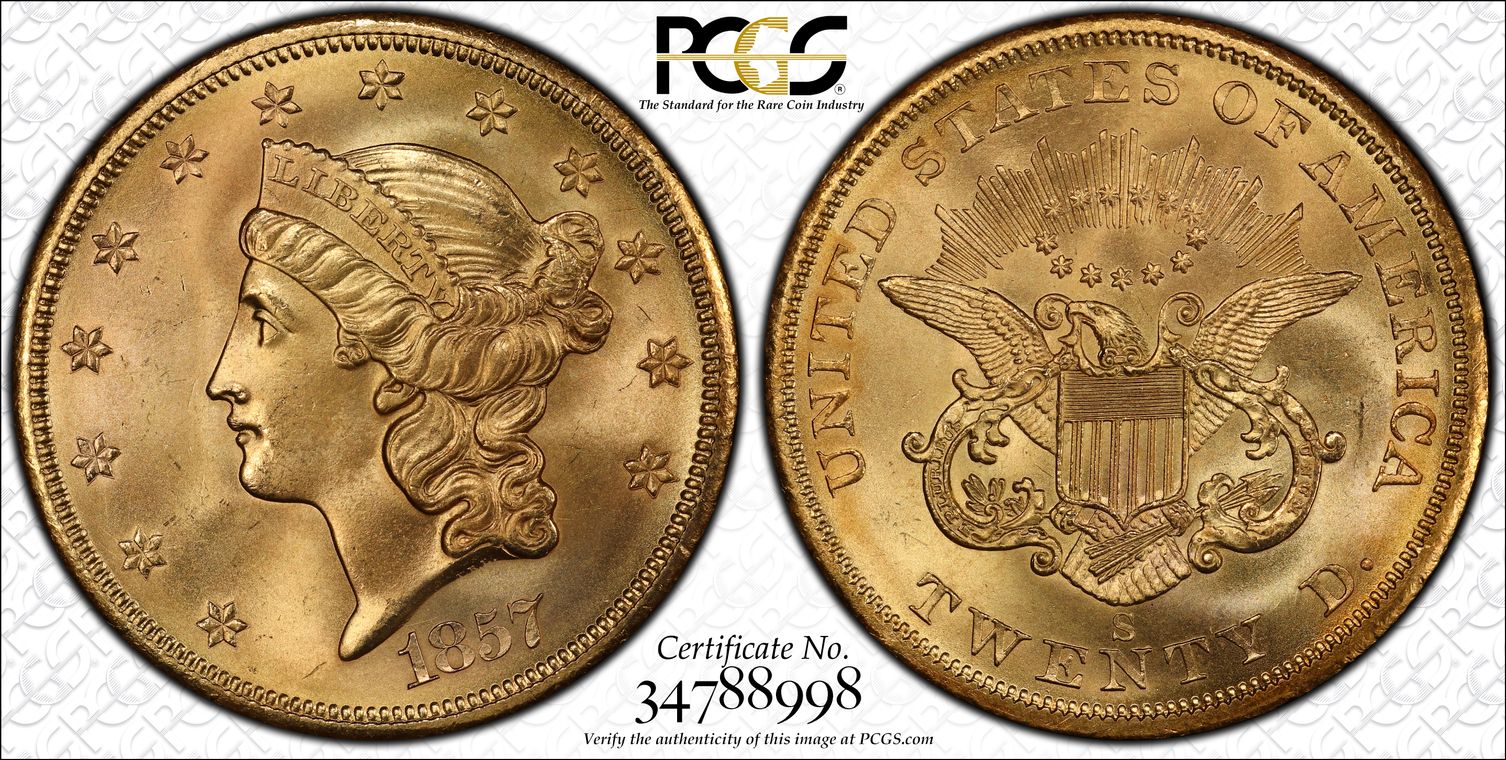
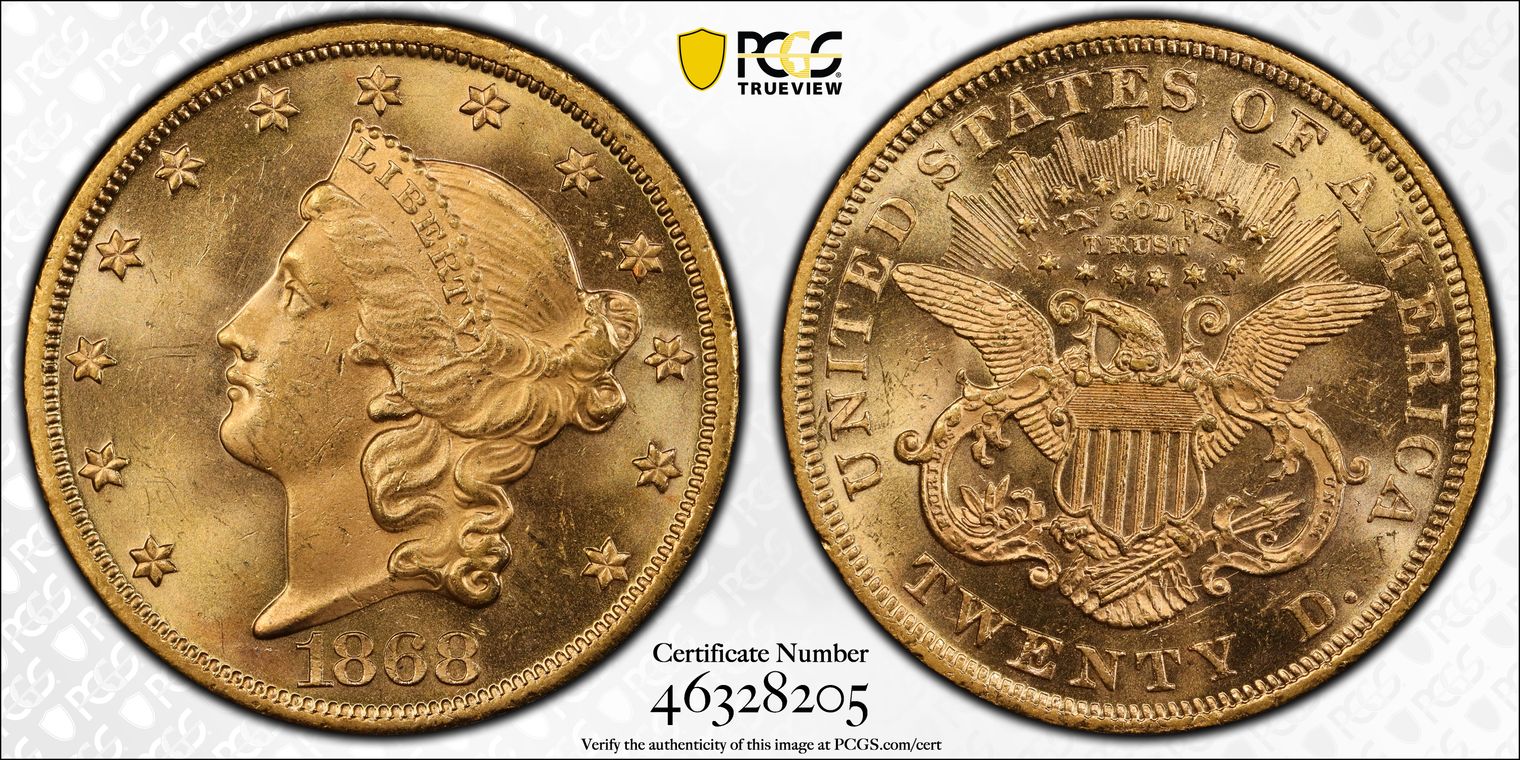
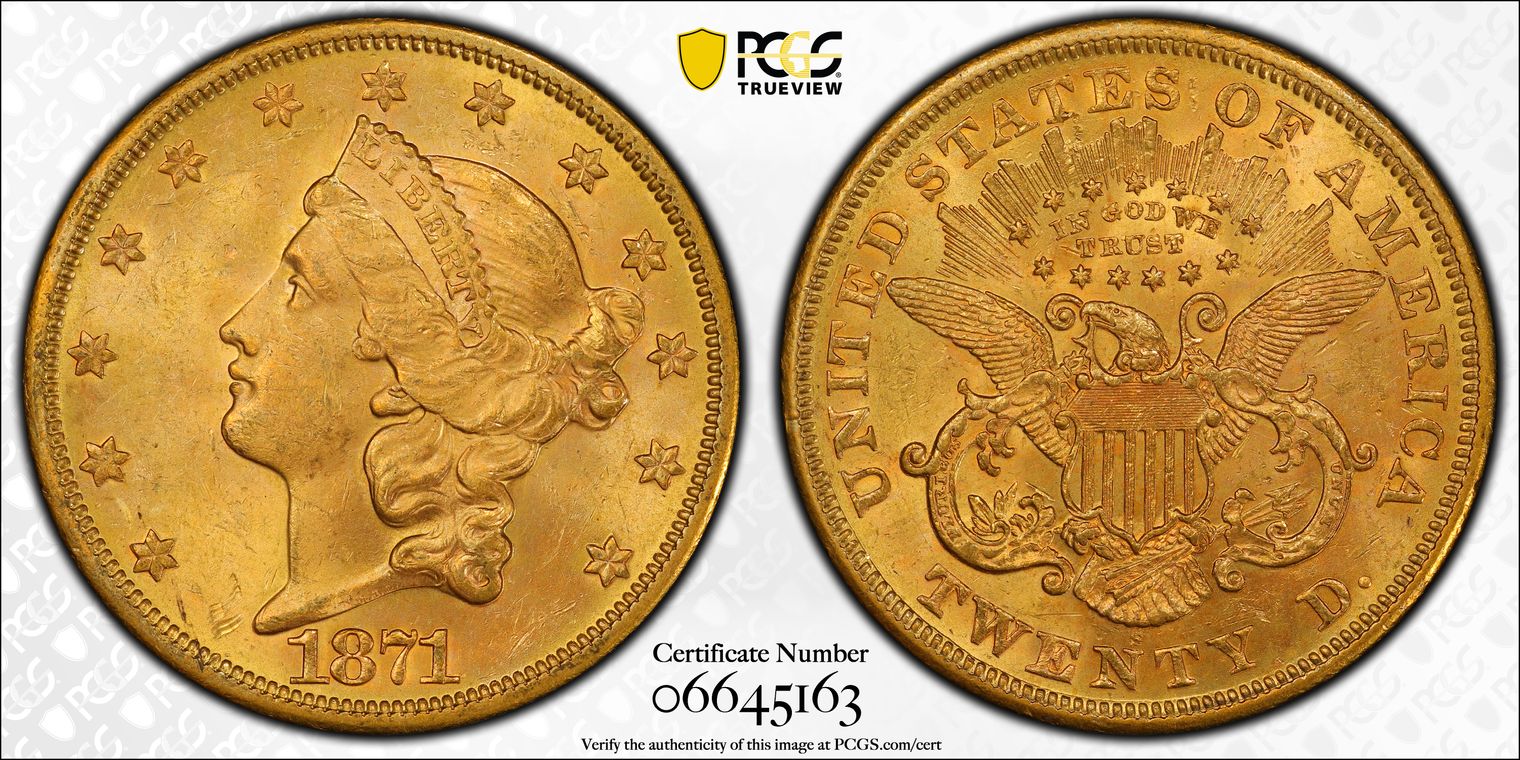
Two “Commons”.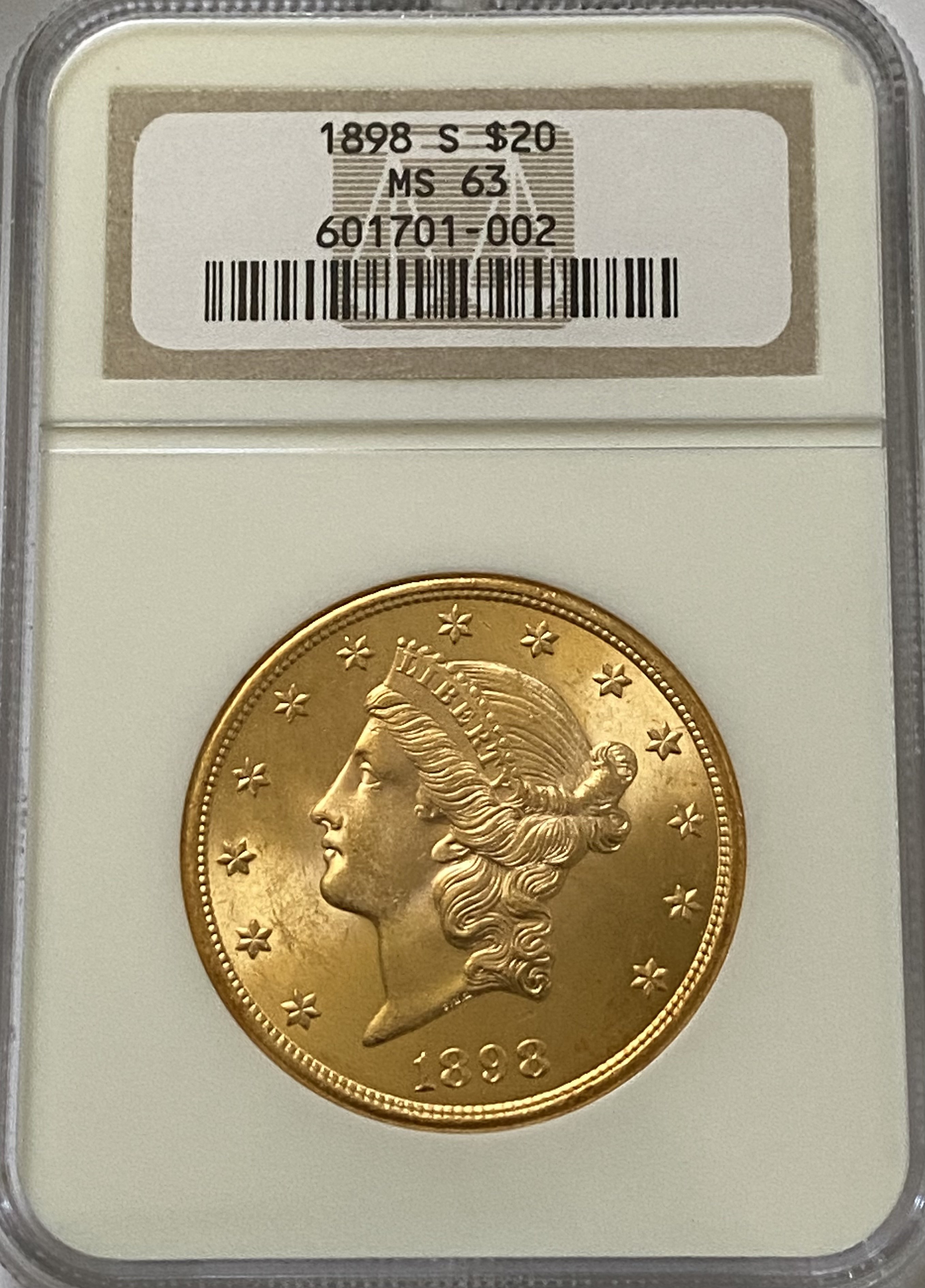
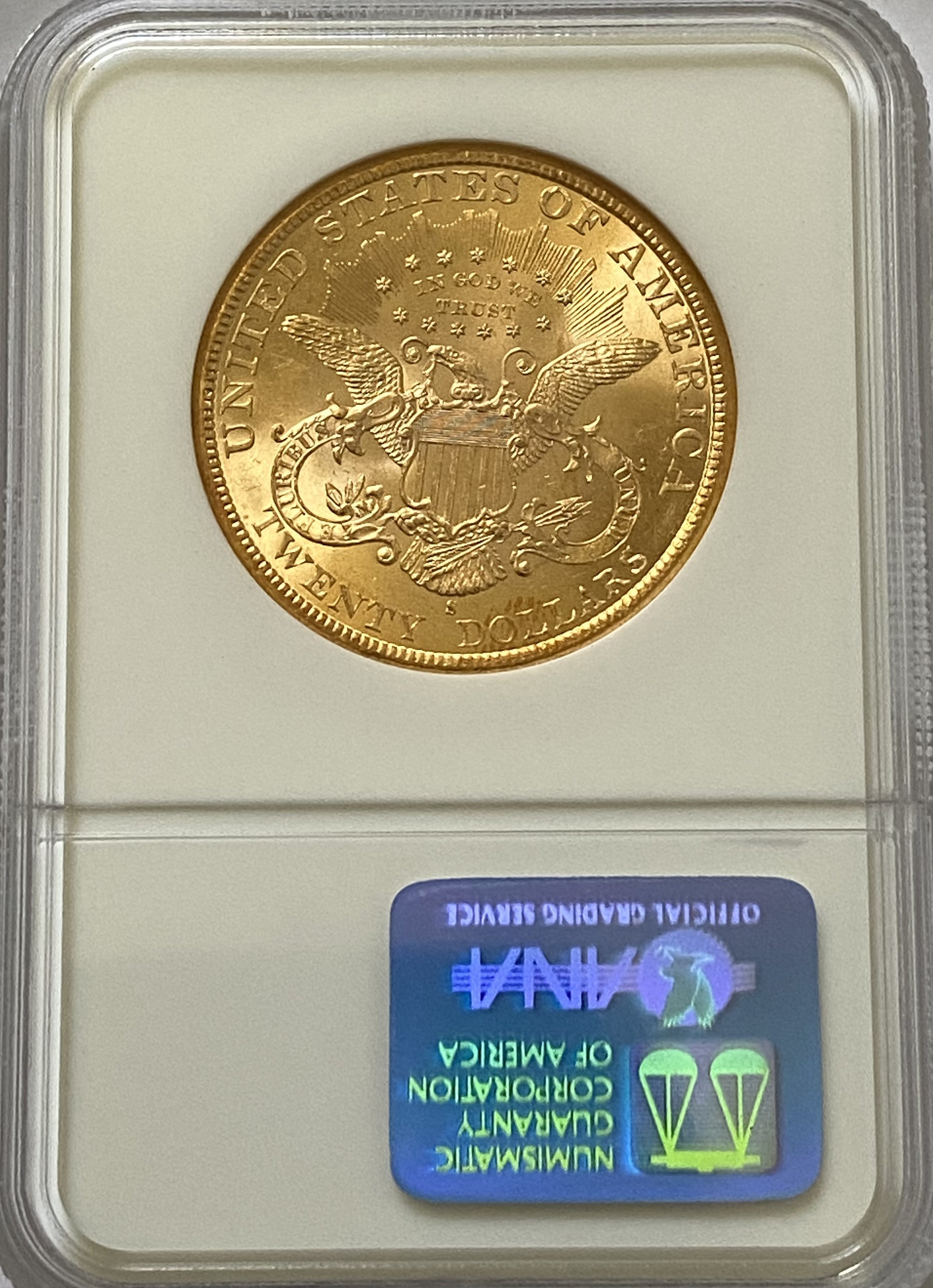
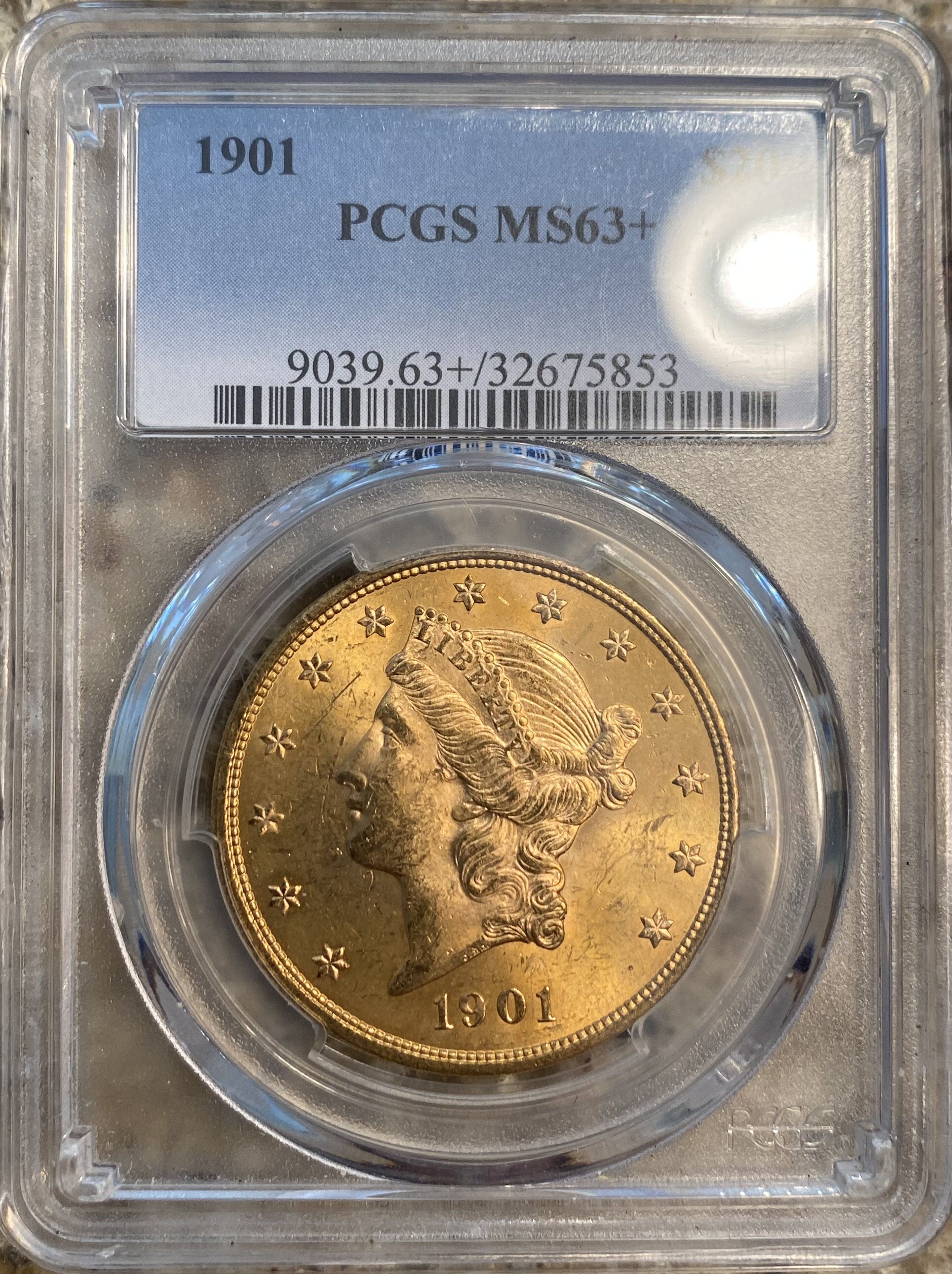
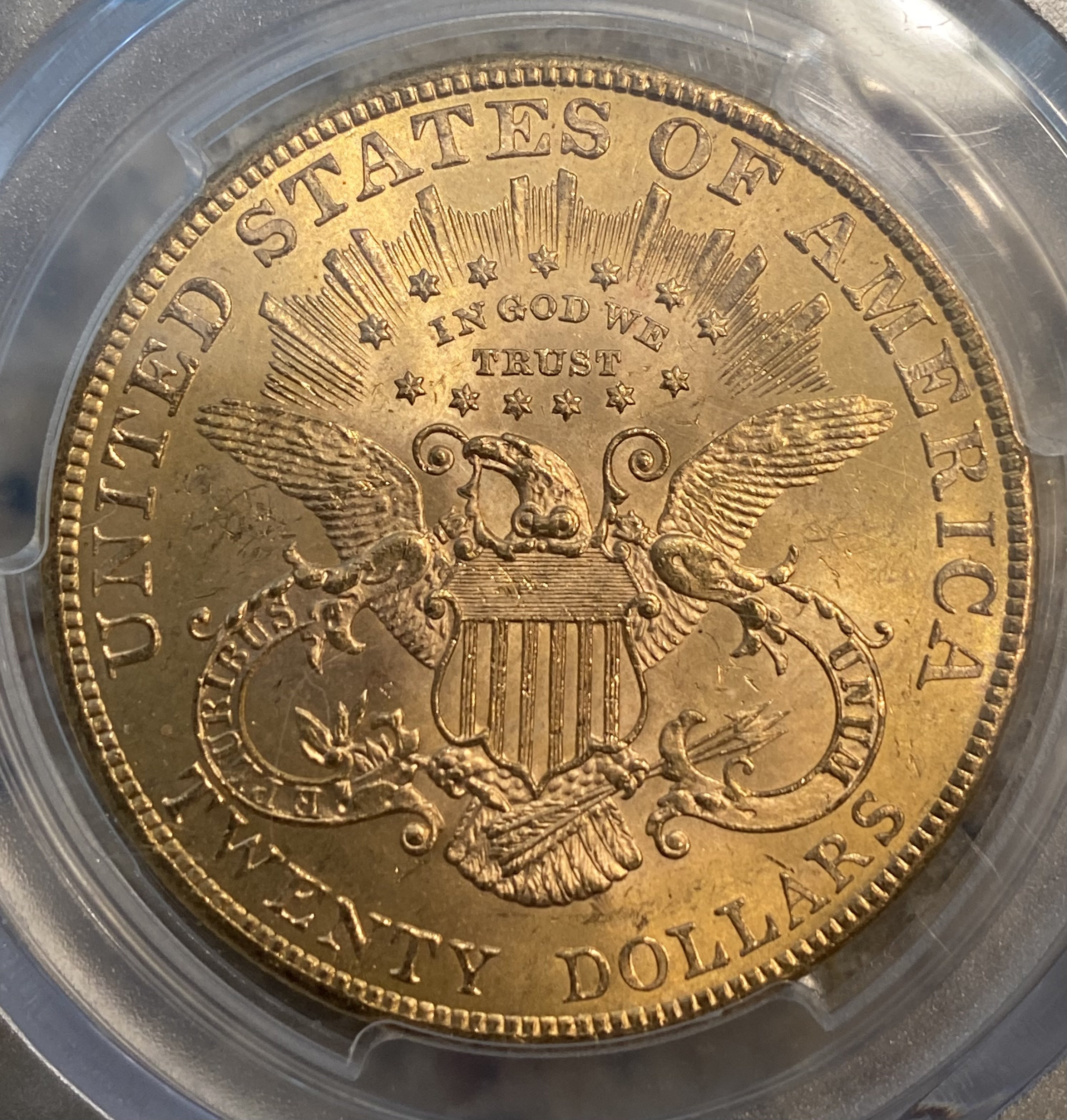
Man, some really great coin in this thread!
I have an 1857-S salvaged from the SS Central America, but this 1861 double eagle is my favorite Type I. this is graded AU-58.
Given that there have not been any shipwreck recoveries of the Type II double eagles, high grade pieces are very scarce. This 1873 is my type coin. It's graded MS-63.
I like this 1896, Type III, double eagle the best although it's not my highet grade example of the type. The reason is the 1896 presidential election where the debate over the ratio between gold and silver took center stage. This is graded a conservative MS-63.
This 1907 High Relief is one of the best examples I have seen. Yes, it's in "the wrong holder," NGC MS-65.
This 1908 No Motto was my first double eagle. I bought it when I was a sophomore in high school.
This 1927 double eagle is an MS-65 CAC. I was buried into it financially until the gold price went crazy.
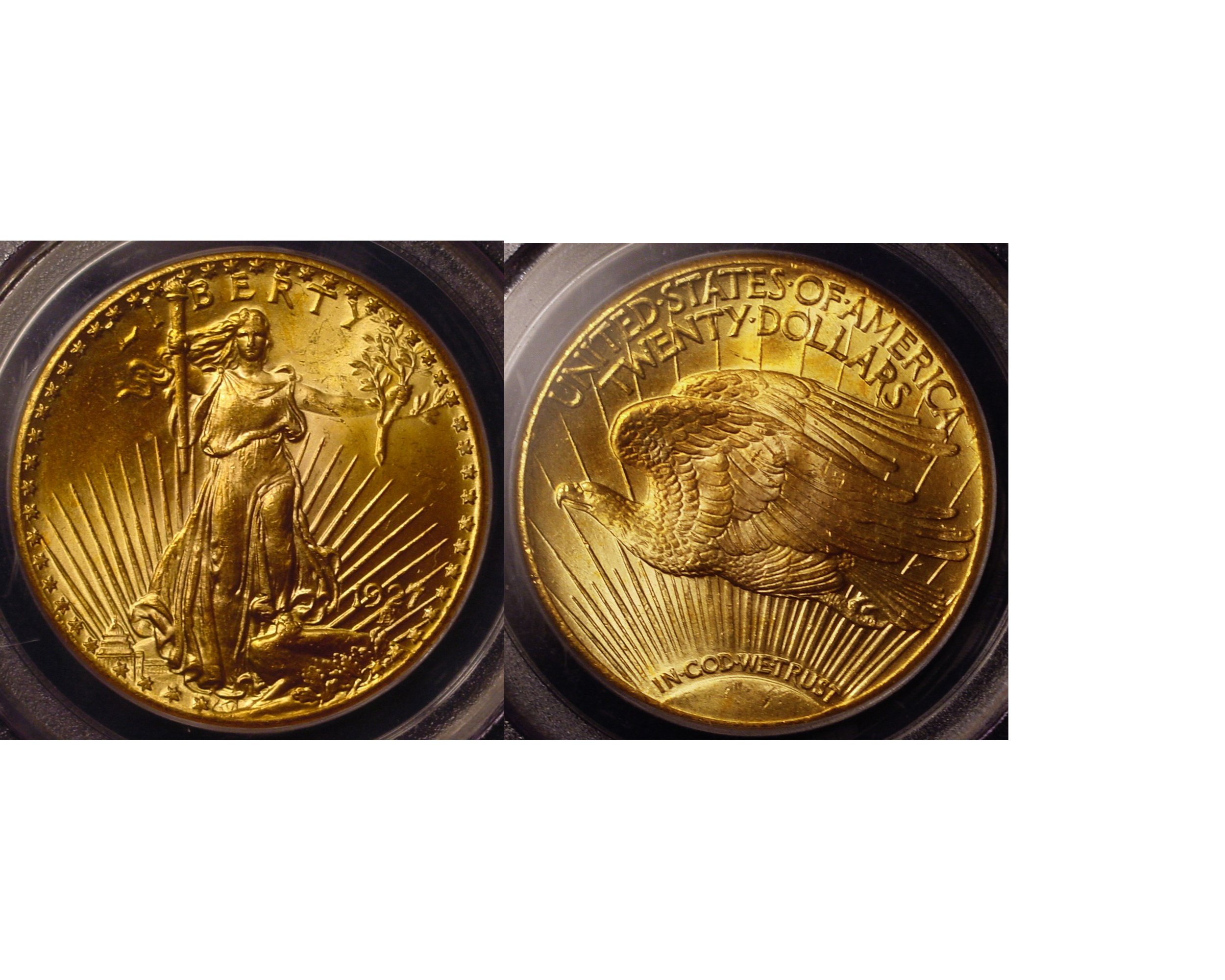
Oh, I left off Type I &II😂
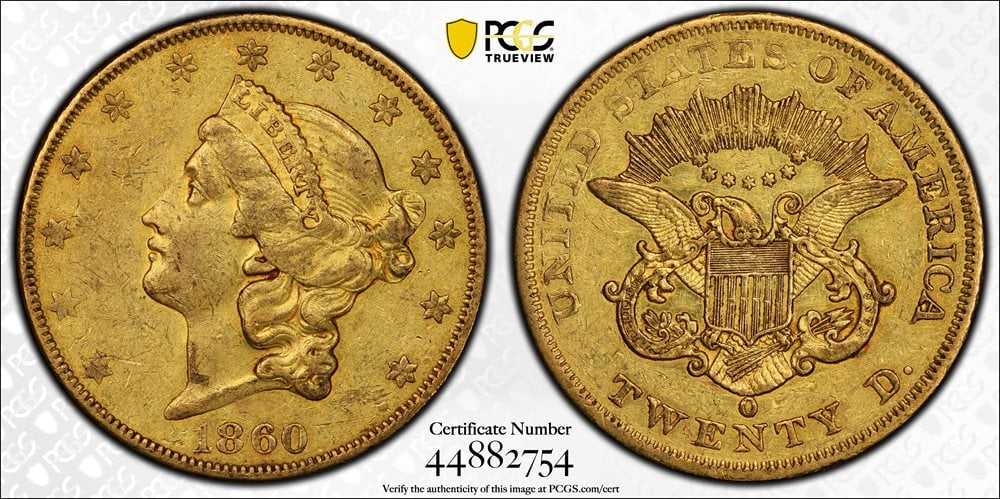
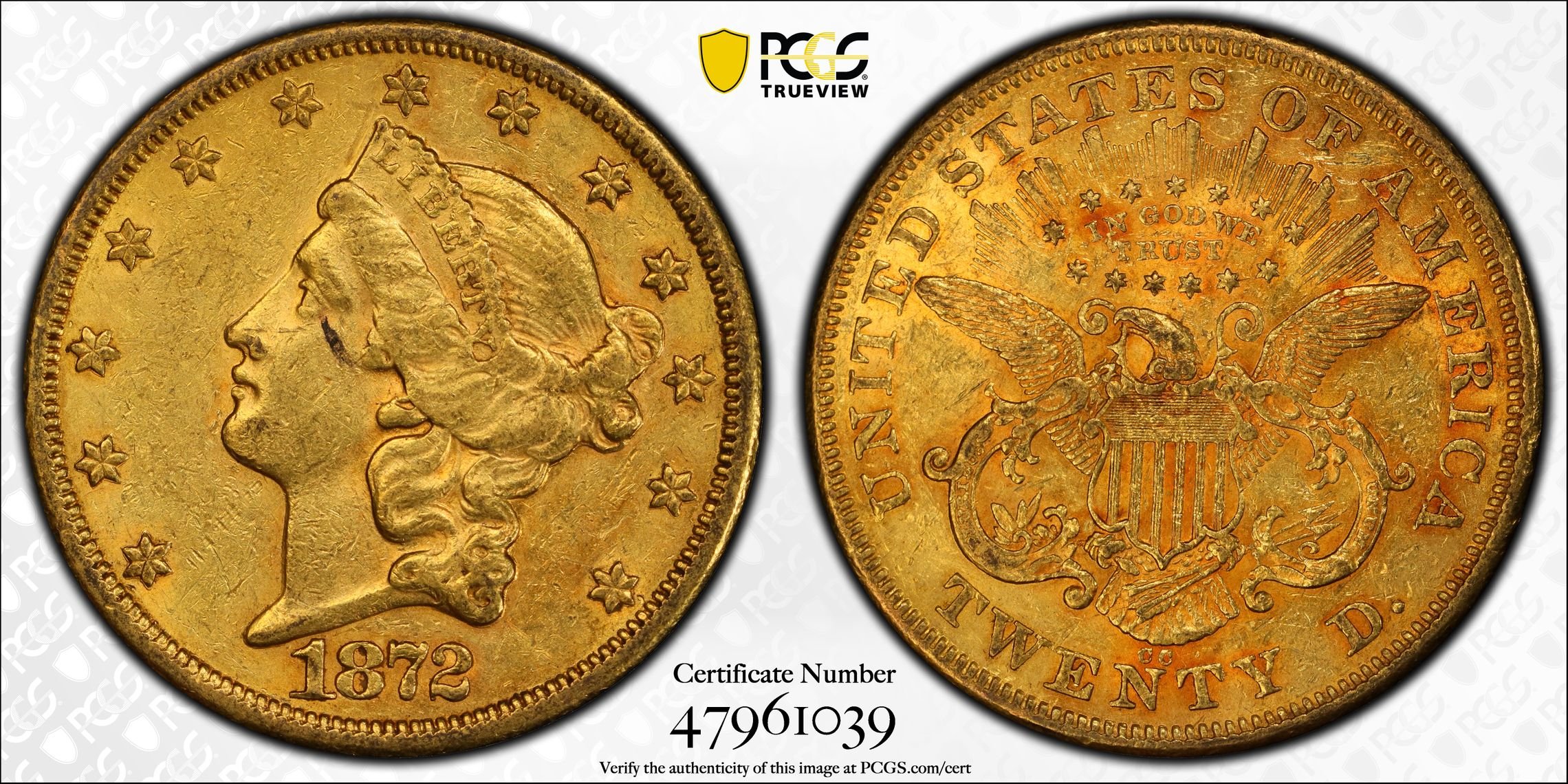
>
Type I
AU50cac
>
Type II
AU50cac
>
Lafayette Grading Set
Years ago I made a discovery that there were actually two With Motto Reverse Hubs made in 1866, the first one with the N of IN low, and the second one raised in what is basically the normal position for the type. A few of the "Low N" dies were used, and at least one die was dual-hubbed from both hubs. Absolutely nobody ever cared.
THis is an 1866 Philadelphia coin.
I have sold a couple
Lots of Liberty Head DEs in the Fairmont Collection:
A couple of favorites. These were purchased from the daughter of an early 20th century dentist.